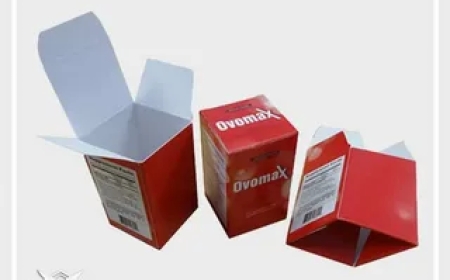Temporary vs. Permanent Fillers: What’s the Difference?
Restore youthfulness & enhance features with dermal fillers in Islamabad. Non-surgical solution for wrinkles, volume loss & facial contouring.

When it comes to non-surgical facial rejuvenation, dermal fillers are one of the most effective and widely used treatments available today. Whether it's restoring volume, reducing wrinkles, or enhancing features like the lips or cheeks, fillers offer fast and reliable results. But not all fillers are created equalsome are temporary, while others are permanent. Choosing between the two depends on your aesthetic goals, preferences, and risk tolerance. If you're considering Dermal Fillers in Islamabad, understanding the difference between these two categories is essential for making an informed decision.
What Are Dermal Fillers?
Dermal fillers are gel-like substances injected beneath the skin to improve facial aesthetics. They can smooth out lines, plump up sunken areas, and contour specific features. Their appeal lies in their non-invasive nature, minimal downtime, and visible results.
There are two main types:
-
Temporary Fillers Made from substances the body naturally absorbs over time.
-
Permanent Fillers Composed of synthetic materials designed to stay in the body indefinitely.
Both have unique benefits and limitations.
Temporary Fillers: What You Need to Know
Composition:
Most temporary fillers are composed of hyaluronic acid (HA), a substance naturally found in the skin that maintains moisture and elasticity. Popular brands include Juvederm, Restylane, and Belotero.
Other types of temporary fillers include:
-
Calcium hydroxylapatite (CaHA) Found in products like Radiesse, lasts longer than HA fillers.
-
Poly-L-lactic acid (PLLA) Found in Sculptra, stimulates collagen growth over time.
Benefits:
-
Reversible: If you're not satisfied, HA fillers can be dissolved with hyaluronidase.
-
Natural results: They integrate well with skin tissue, offering a soft and youthful look.
-
Low risk: Because the body metabolizes them, side effects tend to be short-term.
Duration:
Temporary fillers typically last 6 to 24 months, depending on the product used, area treated, and your metabolism.
Permanent Fillers: An Overview
Composition:
Permanent fillers are made from non-biodegradable synthetic materials. One of the most commonly used is polymethylmethacrylate (PMMA), often found in products like Bellafill.
Benefits:
-
Long-lasting effects: Some can last five years or more, reducing the need for frequent treatments.
-
Cost-effective: Over time, they may be more economical due to fewer touch-ups.
Drawbacks:
-
Not reversible: Once injected, they cannot be easily removed.
-
Higher risk: Theres a greater chance of complications such as nodules, lumps, or infections.
-
Less adaptable: As your face changes with age, permanent fillers may not age as naturally as temporary ones.
Comparing the Two: Key Differences
| Feature | Temporary Fillers | Permanent Fillers |
|---|---|---|
| Material | Biodegradable (HA, CaHA, PLLA) | Synthetic (e.g., PMMA) |
| Longevity | 6 to 24 months | 5+ years |
| Reversibility | Yes (especially HA fillers) | No |
| Adjustment over time | Easy to tweak with repeat injections | Difficult to adjust once placed |
| Cost | Lower upfront, more frequent touch-ups | Higher upfront, fewer treatments needed |
| Safety | Lower risk, fewer long-term complications | Higher risk of side effects, especially long-term |
Who Should Choose Temporary Fillers?
Temporary fillers are ideal for:
-
First-time users: Great for those new to cosmetic treatments and unsure of the results they want.
-
People seeking subtle enhancement: Especially in areas like lips, under-eyes, or nasolabial folds.
-
Patients concerned with safety: Since results fade over time and can be reversed, theres more peace of mind.
-
Those who want flexibility: As your facial features evolve, you can change the areas you want to target.
Who Should Consider Permanent Fillers?
Permanent fillers might be suitable for:
-
Patients with significant volume loss: Often used for more dramatic facial restoration.
-
People who want long-term results: To reduce the frequency and cost of follow-up appointments.
-
Experienced aesthetic patients: Those who have previously tried temporary fillers and desire longer-lasting outcomes.
However, permanent fillers are rarely the first option due to the increased risk and irreversible nature of the treatment. Caution and a thorough consultation are necessary.
Can Fillers Be Combined?
Yes, many professionals use a combination approach. For example:
-
HA fillers for lips and tear troughs (soft, flexible areas)
-
CaHA or PLLA for cheeks and temples (longer-lasting support)
-
Occasional use of permanent fillers in deep facial folds
The goal is to customize the treatment based on anatomy, age, and desired results.
Are the Procedures the Same?
The injection process is similar:
-
Consultation Evaluate facial structure and discuss goals
-
Numbing Topical or local anesthetic to reduce discomfort
-
Injection Filler is carefully placed into targeted areas
-
Massage To shape and distribute the product evenly
-
Aftercare Includes avoiding makeup, heat, and alcohol for 24 hours
However, precision and planning are critical with permanent fillers since they cannot be dissolved.
Risks and Side Effects
Temporary Fillers:
-
Mild swelling and bruising
-
Redness or tenderness at the injection site
-
Rarely, allergic reactions or vascular complications
Permanent Fillers:
-
Higher likelihood of granulomas or lumps
-
Potential for asymmetry
-
Risk of infection
-
Long-term complications that may require surgical removal
Always ensure that injections are performed by a licensed and experienced practitioner to minimize these risks.
What Do Experts Recommend?
Many cosmetic surgeons and dermatologists prefer starting with temporary fillers, especially for new patients. They allow for:
-
Testing aesthetic preferences
-
Assessing the bodys response
-
Adjusting treatment as the face naturally changes
Permanent fillers are typically reserved for highly selective cases and should never be taken lightly.
Final Thoughts
Choosing between temporary and permanent fillers depends on your aesthetic goals, budget, and willingness to take risks. Temporary fillers are generally safer, reversible, and adaptable over time, making them ideal for most patients. Permanent fillers offer long-lasting results but carry higher risks and require absolute certainty in placement.
Before deciding, consult a board-certified cosmetic expert to evaluate your needs and recommend the best approach for your face.
If youre considering any filler treatment, the expert team at Dynamic Clinic in Islamabad offers a wide range of non-surgical rejuvenation options tailored to your facial anatomy and personal goals. With state-of-the-art techniques and years of experience, youll receive a treatment plan that is both safe and effectivewhether you're leaning toward temporary or long-term results.


















































